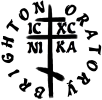Martyr, Bishop of Salano (Spalato) in Dalmatia. Very little is known about him; in Romans 16:14, St. Paul says: “Salute Asyncritus, Phlegon, Hermas, Patrobas, Hermes, and the brethren that are with them.” This last name is supposed by many to refer to the subject of his article, who is also said to have succeeded Titus as Bishop of Dalmatia, and to have been martyred. A passing mention is made of a Hermas in the Acta SS. Bolland., April 8, under Herodion; and Pape says he was one of the seventy-two disciples of Our Lord. Hermes was a very common name among slaves. Migne (P.G., 4 November) says he was one of the seventy disciples, along with Patrobas, Linus, Gaius and Philologus; and Canisius talks of a “Hermæus presbyter” . . . who converted many from idols to Christ, suffered for his faith with Nicander, Bishop of Myra, and was “lacerated and hanged.”
 Some of his relics were given to Spoleto by Gregory the Great. Other relics went to Lothair I by Pope Leo IV; Lothair brought them first to Cornelismünster, near Aachen. The relics later came to Ronse in the 9th century. During those times, Viking raids forced the monks to flee the town more than once, and the monastery was burnt by the Normans in 880. The relics were recovered in 940 and housed in a Romanesque-style crypt in 1083. The church of Saint Hermes, which was later built on top of the crypt, was consecrated in 1129. A pilgrimage in honour of the saint, who had by then be known to cure mental illnesses, sustained the local economy. There is still a French saying today which translates as “Saint Hermes cures the area’s madmen but keeps the Ronse dwellers as they are”.
Some of his relics were given to Spoleto by Gregory the Great. Other relics went to Lothair I by Pope Leo IV; Lothair brought them first to Cornelismünster, near Aachen. The relics later came to Ronse in the 9th century. During those times, Viking raids forced the monks to flee the town more than once, and the monastery was burnt by the Normans in 880. The relics were recovered in 940 and housed in a Romanesque-style crypt in 1083. The church of Saint Hermes, which was later built on top of the crypt, was consecrated in 1129. A pilgrimage in honour of the saint, who had by then be known to cure mental illnesses, sustained the local economy. There is still a French saying today which translates as “Saint Hermes cures the area’s madmen but keeps the Ronse dwellers as they are”.
In past centuries, St. Elmo’s Fire was sometimes called “St. Hermes’ Fire.”

You must be logged in to post a comment.